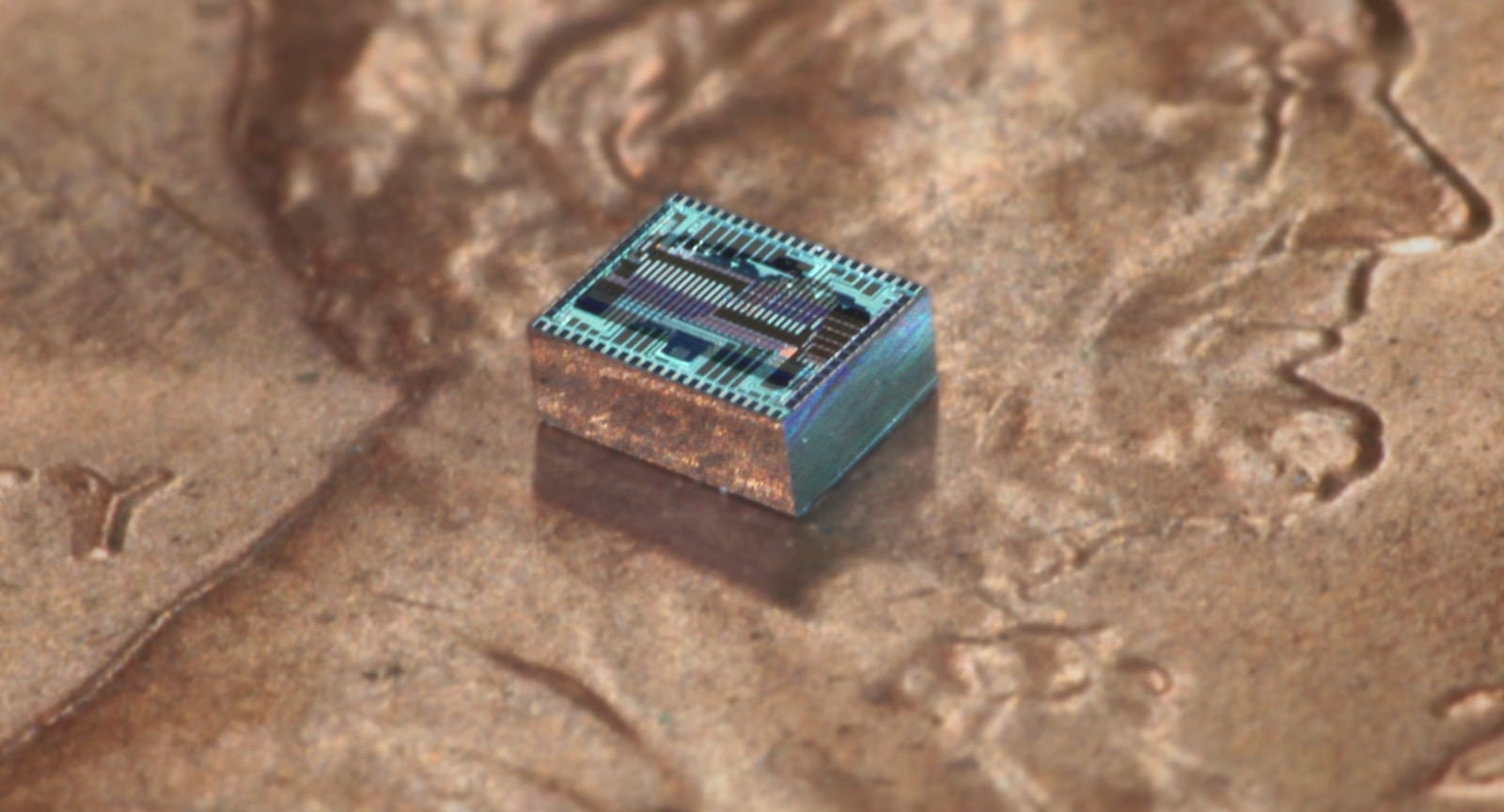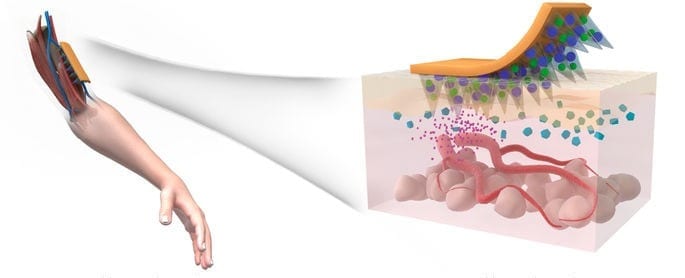
Innovative computational imaging approach could advance applications from brain research to self-driving cars
Researchers have developed an easy-to-build camera that produces 3D images from a single 2D image without any lenses. In an initial application of the technology, the researchers plan to use the new camera, which they call DiffuserCam, to watch microscopic neuron activity in living mice without a microscope. Ultimately, it could prove useful for a wide range of applications involving 3D capture.
The camera is compact and inexpensive to construct because it consists of only a diffuser – essentially a bumpy piece of plastic – placed on top of an image sensor. Although the hardware is simple, the software it uses to reconstruct high resolution 3D images is very complex.
“The DiffuserCam can, in a single shot, capture 3D information in a large volume with high resolution,” said the research team leader Laura Waller, University of California, Berkeley. “We think the camera could be useful for self-driving cars, where the 3D information can offer a sense of scale, or it could be used with machine learning algorithms to perform face detection, track people or automatically classify objects.”
In Optica, The Optical Society’s journal for high impact research, the researchers show that the DiffuserCam can be used to reconstruct 100 million voxels, or 3D pixels, from a 1.3-megapixel (1.3 million pixels) image without any scanning. For comparison, the iPhone X camera takes 12-megapixel photos. The researchers used the camera to capture the 3D structure of leaves from a small plant.
“Our new camera is a great example of what can be accomplished with computational imaging — an approach that examines how hardware and software can be used together to design imaging systems,” said Waller. “We made a concerted effort to keep the hardware extremely simple and inexpensive. Although the software is very complicated, it can also be easily replicated or distributed, allowing others to create this type of camera at home.”
A DiffuserCam can be created using any type of image sensor and can image objects that range from microscopic in scale all the way up to the size of a person. It offers a resolution in the tens of microns range when imaging objects close to the sensor. Although the resolution decreases when imaging a scene farther away from the sensor, it is still high enough to distinguish that one person is standing several feet closer to the camera than another person, for example.
A simple approach to complex imaging
The DiffuserCam is a relative of the light field camera, which captures how much light is striking a pixel on the image sensor as well as the angle from which the light hits that pixel. In a typical light field camera, an array of tiny lenses placed in front of the sensor is used to capture the direction of the incoming light, allowing computational approaches to refocus the image and create 3D images without the scanning steps typically required to obtain 3D information.
Until now, light field cameras have been limited in spatial resolution because some spatial information is lost while collecting the directional information. Another drawback of these cameras is that the microlens arrays are expensive and must be customized for a particular camera or optical components used for imaging.
“I wanted to see if we could achieve the same imaging capabilities using simple and cheap hardware,” said Waller. “If we have better algorithms, could the carefully designed, expensive microlens arrays be replaced with a plastic surface with a random pattern such as a bumpy piece of plastic?”
After experimenting with various types of diffusers and developing the complex algorithms, Nick Antipa and Grace Kuo, students in Waller’s lab, discovered that Waller’s idea for a simple light field camera was possible. In fact, using random bumps in privacy glass stickers, Scotch tape or plastic conference badge holders, allowed the researchers to improve on traditional light field camera capabilities by using compressed sensing to avoid the typical loss of resolution that comes with microlens arrays.
Although other light field cameras use lens arrays that are precisely designed and aligned, the exact size and shape of the bumps in the new camera’s diffuser are unknown. This means that a few images of a moving point of light must be acquired to calibrate the software prior to imaging. The researchers are working on a way to eliminate this calibration step by using the raw data for calibration. They also want to improve the accuracy of the software and make the 3D reconstruction faster.
No microscope required
The new camera will be used in a project at University of California Berkeley that aims to watch a million individual neurons while stimulating 1,000 of them with single-cell accuracy. The project is funded by DARPA’s Neural Engineering System Design program – part of the federal government’s BRAIN Initiative – to develop implantable, biocompatible neural interfaces that could eventually compensate for visual or hearing deficits.
As a first step, the researchers want to create what they call a cortical modem that will “read” and “write” to the brains of animal models, much like the input-output activity of internet modems. The DiffuserCam will be the heart of the reading device for this project, which will also use special proteins that allow scientists to control neuronal activity with light.
“Using this to watch neurons fire in a mouse brain could in the future help us understand more about sensory perception and provide knowledge that could be used to cure diseases like Alzheimer’s or mental disorders,” said Waller.
Although newly developed imaging techniques can capture hundreds of neurons firing, how the brain works on larger scales is not fully understood. The DiffuserCam has the potential to provide that insight by imaging millions of neurons in one shot. Because the camera is lightweight and requires no microscope or objective lens, it can be attached to a transparent window in a mouse’s skull, allowing neuronal activity to be linked with behavior. Several arrays with overlying diffusers could be tiled to image large areas.
A need for interdisciplinary designers
“Our work shows that computational imaging can be a creative process that examines all parts of the optical design and algorithm design to create optical systems that accomplish things that couldn’t be done before or to use a simpler approach to something that could be done before,” Waller said. “This is a very powerful direction for imaging, but requires designers with optical and physics expertise as well as computational knowledge.”
The new Berkeley Center for Computational Imaging, headed by Waller, is working to train more scientists in this interdisciplinary field. Scientists from the center also meet weekly with bioengineers, physicists and electrical engineers as well as experts in signal processing and machine learning to exchange ideas and to better understand the imaging needs of other fields.
Learn more: New Lensless Camera Creates Detailed 3D Images Without Scanning
The Latest on: DiffuserCam
[google_news title=”” keyword=”DiffuserCam” num_posts=”10″ blurb_length=”0″ show_thumb=”left”]- The best cheap dash cam sales and deals for May 2024on May 7, 2024 at 11:59 pm
We're rounding up all the latest cheap dash cam deals so that you can save cash while opting for extra security on the road. While you can easily sink three figures into a high-end security system ...
- The 13+ Best Adult Cam Sites of 2024on May 6, 2024 at 4:59 pm
Adult cam sites are all the rage. There has never been a better time to interact with a live cam girl. Thanks to technology moving things forward, and the fact that it’s more satisfying to ...
- How To Be a Cam Girl and Make Money Camming Online in 2024on May 5, 2024 at 5:00 pm
Click to share on Facebook (Opens in new window) Click to share on X (Opens in new window) Click to share on Reddit (Opens in new window) Curious how to side hustle your way into becoming a cam ...
- Best dash cams to protect your car in 2024on May 3, 2024 at 4:55 am
The best dash cams can save you all sorts of problems when you're driving. But all the benefits are meaningless if you're not sure which camera is the right one for your car. After all there are ...
- Wyze Cam v4 review: Not the best, but better than the laston May 2, 2024 at 5:00 pm
It's a budget camera, but an excellent budget camera In the roughly seven years since its first camera release, Wyze has seen a meteoric rise in popularity as an affordable home security solution ...
- 25 Cheapest Cam Sites: Most Affordable Webcam Shows Onlineon May 2, 2024 at 5:00 pm
Searching for cheap cam sites is like looking for hidden gems. These gems are virtual tokens you use to interact with and enjoy shows from appealing cam models without spending much. Finding ...
- The best cheap webcam in 2024: top picks for budget-minded userson May 1, 2024 at 2:24 am
With many more of us working remotely these days, a decent webcam is essential for staying connected with colleagues, but often the best cheap webcam is more than enough to get the job done. By ...
- Trans Cam Sites: 12 Best Shemale Cam Websites to Check NOW!on April 29, 2024 at 5:00 pm
Looking for the best tranny cam sites used to be a bit tricky. Nowadays, these platforms are gaining popularity for those seeking live cams and interactive experiences with transgender performers.
- 16 Best Cam Sites Online: Adult Live Cam Shows 2024on April 29, 2024 at 3:47 am
Thanks to the internet, physical distance doesn't have to equate to intimate distance. But - there are a few prerequisites to enjoy these cam sites to their fullest potential. Of course, you will ...
- The Best Diffuser for Curly Hair Stylingon April 27, 2024 at 5:00 pm
Do you have curly hair that, on some days, gives you salon-quality bounce and definition, but on other days, just refuses to cooperate? You’re not alone in this ordeal. Curly hair is challenging ...
via Google News and Bing News










